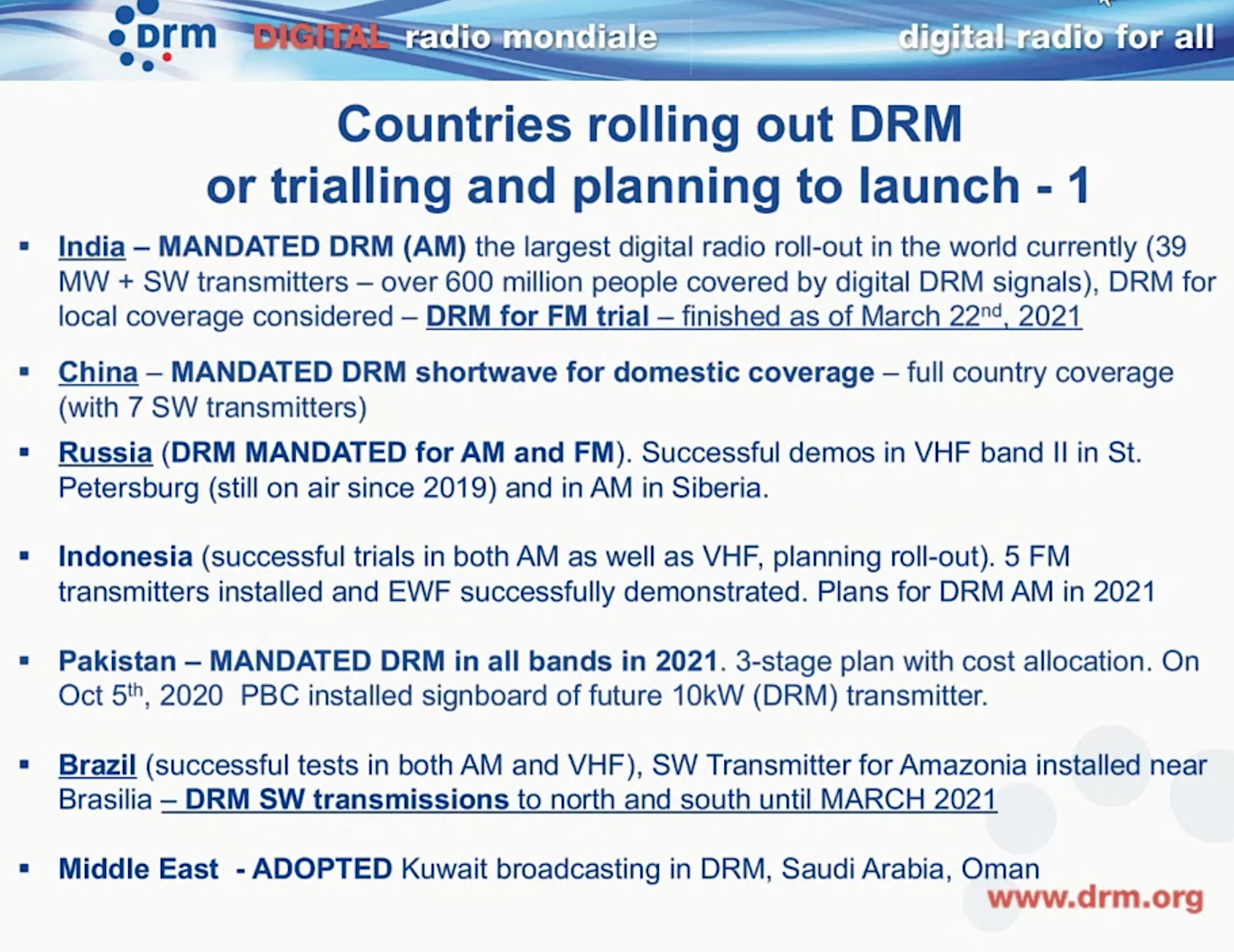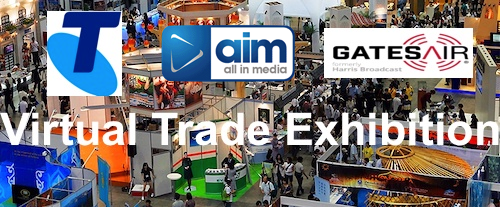“We live in a troubled time, but we have a great strength with radio,” said DRM Chairperson Ruxandra Obreja at the ABU’s Virtual DBS Conference.
“For many people, radio is the only means of information about their world…
“In this world there are 3.5 billion people who are not connected online, they get information mostly from radio… it can reach any citizen, it is the lifeblood of the unconnected communities. Radio is free with no subscription required, independent of local infrastructure and can be consumed with anonymity, no one is monitoring your activity, which is very important in some countries,” Obreja told conference delegates.
DRM gives universal and free access to information, entertainment and education. “You can do all this using a single low cost technical standard, which has efficient spectrum usage and delivers much more than audio.”
DRM does not need new infrastructure to transmit, and allows for a smooth transition from analog to digital.
The benefits of DRM are the same no matter which frequency band is being used:
- More choice of channels/program
- Excellent audio
- Multimedia applications
- Good coverage area with a robust signal
- Automatic tuning, no more frequencies for people to learn by heart
- Emergency warnings
In an emergency, DRM can wake up receivers to sound a warning remotely from another safe part of the country where the transmitter is protected. It can also broadcast information in different languages and text fonts.
During 2020, with many schools closed, DRM is providing access to educational content without the need of the internet. “In DRM receivers you can cache information to be accessed later, which is very useful for remote areas during the pandemic.”
DRM is also using external screens in villages in India to display messages, educational material and warnings that have been sent within the digital transmission.
A trial in Delhi and Jaipur during March 2021 demonstrated the advantages of DRM for the FM band.

In Africa, South Africa is the first country to commit to a digital radio policy, called DSB in that country, digital sound broadcasting.
Almost 3 million cars in India have DRM receivers. New receiver brands have joined the roll out in India, according to Obreja. There are many standalone receivers also developed and Fraunhofer is developing mobile phone receivers… there’s receivers from Gospel with prices dropping, including small portable radios and those with good speaker quality, according to Obreja.
All the details are in the handbook on the DRM website.
Subscribe to the radioinfo podcast on these platforms: Acast, Apple iTunes Podcasts, Podtail, Spotify, Google Podcasts, TuneIn, or wherever you get your podcasts.






Ms Obreja has shown that DRM has been used by education authorities to deliver education programs where the internet is not available or expensive. Also DRM has been used by border protection and the military.
If a DRM broadcast from New Zealand can be listened to in Spain clearly and not have its signal subject to variations in conditions of the ionosphere as per AM SW transmissions, then DRM should be a method of transmitting signals from Radio Australia to our Pacific Island neighbours.
Having Radio Australia transmit via SW DRM from Australia is not subject to its signals being cut off at its FM retransmission facilities or via IP networks.
According to the article, the price of DRM receivers is dropping. Why doesn't Australia supply DRM receivers to our Pacific Island neighbours as part of an aid package.
Subject to market research by the Australian Government of the Pacific Island neighbours radio needs, reinstating Radio Australia's SW service as a SW DRM service may well cover all the Pacific Islands as well as the rest of the world.
Thank you,
Anthony of logical Belfield